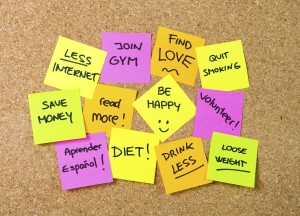Are you running at full speed wondering at the end of the day where your day went and feeling stressed out? Are you going from one appointment to another being consistently late for your appointments? Do you get home feeling overwhelmed from your day only to find that you have a full schedule of car pooling to your kids events?
Today this is the new “normal”. It is not a healthy way to live. It is time to create some margin in your life.
I learned a lot about margin from Dr. Dick Swenson in his excellent book Margin: Restoring Emotional, Physical, Financial, and Time Reserves to Overloaded Lives . Dr Swenson does a great job of discussing how to get your life back.
10 Ways to Create Margin in Your Life
1. Review the family calendar on Sunday night
Take time on Sunday evenings to review the upcoming week of activities and plan your week with your spouse. Make sure you take time to plan family fun. I would highly recommend Patrick Lencioni’s book The Three Big Questions for a Frantic Family: A Leadership Fable About Restoring Sanity To The Most Important Organization In Your Life for families. Patrick takes business principles and applies them to the family. This is a good resource if you are feeling overwhelmed with family activities.
2. Put Church on your weekly family calendar
It is important to attend church weekly and to pray daily. This is a time to worship and praise God. One of our family rules as my kids grew up was that we did not take a vacation from God because He does not take a vacation from us. When we were traveling or on vacation we always found a church to attend. I know in today’s hectic world there are sports events on Sundays. You will need to decide what is more important.
3. Set a night for date night
Pick a night during the week for you and your spouse to go out or spend time together. This does not mean you have to spend a bunch of money. There are lots of things you can do inexpensively. It may mean just going for a walk at a park or going to a coffee shop. Pick an inexpensive restaurant you both like and have dinner together. Put the phones aside and take time to talk.
4. Reduce the events your kids participate in.
Today our kids are expected to be involved in everything. This can be a huge stress on the family. Consider limiting your kids’ activities. You might consider things like only allowing one sport per season and limiting their club activities and other lessons.
5. Set up ghost appointments at work.
If you have the ability to control your schedule at work make ghost appointments. The first time I heard of ghost appointments was at a dentists office. I overheard him speaking to the receptionist and he was asking about what times he had ghost appointments. I asked him what those were. He told me they were appointments that were scheduled that allowed for emergencies and for time for him to get caught up during the day. I found this a great concept and implemented it into my own day just by scheduling appointments with myself in my calendar during the day.
6. Set your clock or watch 10 minutes early
If you find that you are consistently late for appointments try setting your watch or clock in your car 10 – 15 minutes early.
7. Set aside 3 months living expenses in a savings account
Start by putting aside 1 month of living expenses in a savings account until you build up to 3 months. This may take some discipline and some time, but it is recommended by many financial experts. It will help to reduce financial stress.
8. Plan your workout times
Many people start their day by working out to insure that they take care of their fitness first thing. Lunch time can be a good time time to get a midday break and give yourself more energy for the rest of the day. Working out is a great way to reduce stress, stay healthy and have more energy.
9. Spend some time with friends
A great way to do this when you are on a tight schedule is to go out with another couple or invite another couple over to your home. Guys I have found that women need more time with friend than we do (this may just be me). Make sure you allow her time to bond with her friends.
10. Have dinner with the Family
I know this can be very challenging today. The family dinner table is a great place to learn about how the family is doing and what is going on at school. A fun game to play is high/low. What is the best thing that happened to you today? What did not go well today? If you absolutely can’t make dinner try family breakfast. It is very important to spend time together at meals.







